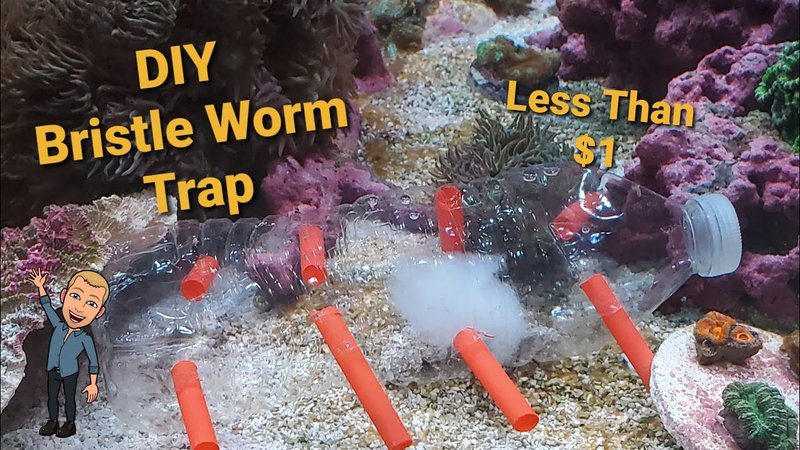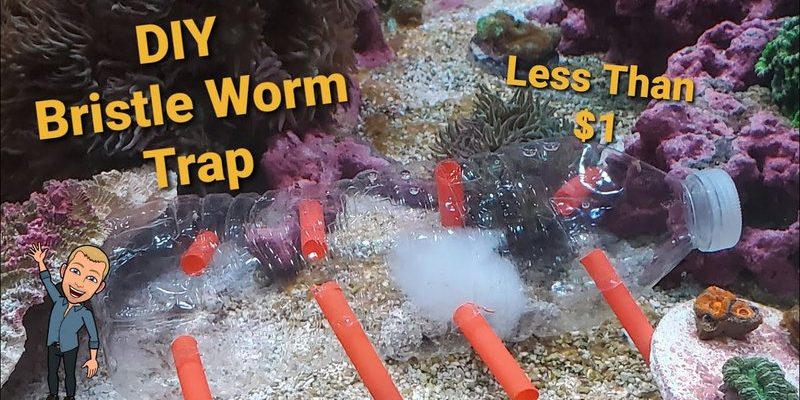
Creating your own traps can be quite satisfying, and it doesn’t require a Ph.D. in marine biology! It’s more about understanding how these worms behave and using that knowledge to your advantage. Imagine setting up a cozy little baited area where the worms can wander in but can’t find their way back out. It’s like a comfy, wormy hotel that your fish will thank you for. In this guide, we’ll explore some straightforward traps you can make at home, helping you reclaim your tank without any fuss.
Understanding Bristle Worms
Before we dive into DIY traps, let’s take a moment to understand bristle worms a bit better. These marine worms are typically found in saltwater tanks and can vary in size, from just a few inches to over a foot long. They’re often recognized by their long, segmented bodies and bristles that run along their sides. Here’s the thing: although they play a crucial role in the ecosystem by breaking down organic matter, too many in a confined space can lead to problems.
So, why should you bother with traps? Well, when bristle worms overpopulate, they can eat your corals and plants, disturb your substrate, and even cause stress to your fish. You might be wondering how to differentiate between helpful and harmful worms. Generally, if they’re too big or too many, they’re likely outstaying their welcome. It’s similar to finding too many weeds in your garden; a few are okay, but a lot can choke out the beautiful flowers you’ve worked hard to grow.
Why Use DIY Traps?
Using DIY traps offers several advantages over store-bought solutions. First and foremost, you’re in control of the materials. That means you can ensure everything is safe for your aquarium inhabitants. Additionally, creating your traps can be significantly more cost-effective, and you might have most of the materials lying around your house. Honestly, it’s a win-win!
Another reason DIY traps are a great choice is customization. You can tweak them based on your specific tank setup and the number of bristle worms you’re dealing with. If one method doesn’t seem to work as well as expected, you can adjust your approach. It’s all about finding the right fit for your unique tank environment. Think of it like picking the best tools for a home improvement project—you want what suits your needs best.
Simple Trap Ideas to Try
Now that we’ve laid the groundwork, let’s talk about some easy and effective traps you can create. These traps use everyday items you probably already have on hand.
- The Bottle Trap: Take a plastic bottle and cut it in half. Invert the top half into the bottom half and secure it. Bait it with raw shrimp or fish food. Worms will wander in for a snack and find it tricky to escape. Place this trap in areas where you see the most bristle worms.
- The Jar Trap: Use a glass jar and fill it with some bait. You can use fish food or a piece of shrimp. Submerge the jar so the bait is below the water line but the top is above it. Worms will swim in, but they won’t be able to swim back out. This is a straightforward but effective method.
- The DIY Bait Station: If you want to get a bit fancier, create a bait station with a small bowl or container. Fill it with sand and add bait on top. The worms will be drawn to the bait but will get trapped in the sand when they try to reach it.
These traps can be surprisingly effective. Just remember that patience is key. You might not catch every worm on the first try, and that’s completely okay!
Setting Up Your Traps
Once you’ve chosen your trap design, it’s time to set it up in your tank. Here’s a quick step-by-step guide to ensure you’re doing it right.
1. **Choose the Right Location:** Look for areas where you’ve noticed high bristle worm activity. This could be around rocks, coral, or wherever you feed your fish.
2. **Bait Wisely:** Use fresh bait. Worms are more likely to go for something that smells good. Shrimp is a favorite, but any decaying fish or seafood will do.
3. **Monitor the Traps:** Check your traps daily. Once you’ve caught some worms, you can remove the traps to prevent overfishing your tank.
4. **Dispose of Caught Worms Safely:** When you’ve caught bristle worms, it’s best to remove them from your tank and dispose of them. You can either release them outside if they’re safe for local environments or discard them.
By following these steps, you should have a good shot at keeping the bristle worm population in check!
Maintaining a Healthy Aquarium Environment
While traps can help manage bristle worms, it’s also important to focus on maintaining a healthy tank environment. Here are some ways to ensure your aquarium remains balanced and thriving:
– **Regular Water Changes:** Keeping your water clean is crucial. Regular water changes can help prevent an overpopulation of worms.
– **Avoid Overfeeding:** If you feed your fish too much, uneaten food can lead to a buildup of organic matter, which bristle worms love. Stick to a feeding schedule and only provide what your fish can eat in a few minutes.
– **Introduce Natural Predators:** Some fish and invertebrates, such as certain wrasses or arrow crabs, can help keep bristle worm populations under control. Just be sure they’re safe companions for your other fish!
Maintaining your aquarium can be a balancing act, but with the right approach, you can keep bristle worms in check and enjoy a vibrant aquatic ecosystem.
Dealing with bristle worms doesn’t have to be a daunting task. By using simple DIY traps, you can manage their numbers safely and effectively. Remember to keep your aquarium environment healthy and clean, which will help discourage bristle worm overpopulation in the first place.
The journey to maintaining a beautiful aquarium might include a few bumps along the way, but with these tips and tricks, you can create a peaceful underwater haven for your fish and corals. Happy trapping, and may your aquarium thrive!

